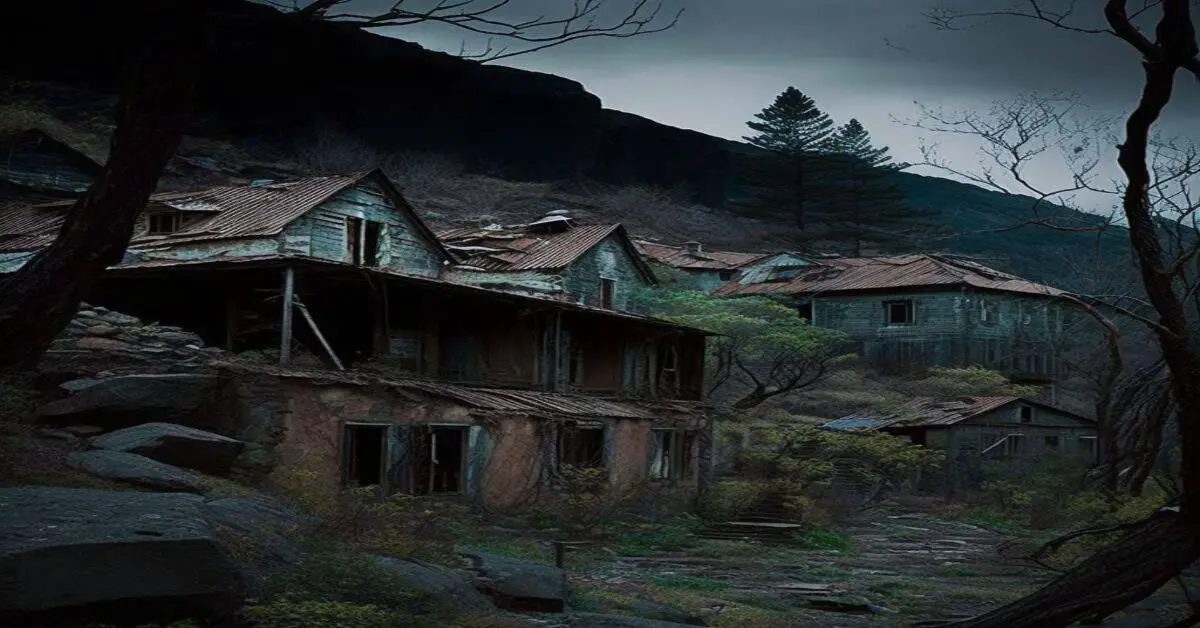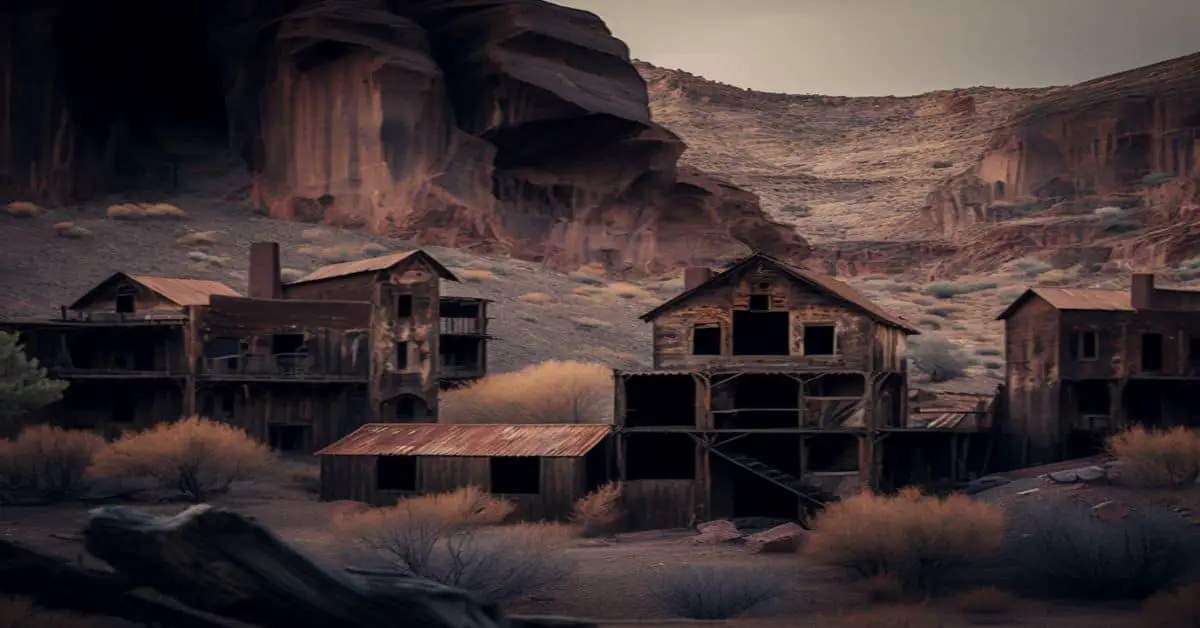Elkmont, a once-thriving lumber town turned resort destination, has a haunting history that continues to captivate visitors to this day. Located near Cades Cove and Townsend, TN, the town’s story began in the late 1800s when it emerged as a logging town, attracting workers seeking employment in the booming industry.
As the town grew, it also became an attractive location for the well-to-do, who built summer cottages in the area, establishing it as a popular resort destination. However, the logging operations eventually ceased, and the town was bought by the New Smoky Mountain National Park in the 1930s.
Today, Elkmont is a campground owned by the park, with remnants of the old town still standing, including a graveyard, abandoned homes and summer cabins, and the Wonderland Hotel. Despite the controversy over what to do with the remaining buildings, Elkmont’s history has left an indelible mark on the area, and its stories continue to intrigue and fascinate visitors who come to discover the town’s haunting past.
In this article, we will explore the rise and fall of Elkmont, uncover its current state, and delve into the ongoing controversy surrounding the preservation of this fascinating piece of history.
Key Takeaways
- Elkmont was once a thriving lumber town that became a resort community for the wealthy.
- The town is now a ghost town owned by Smoky Mountain National Park and contains remains such as a graveyard, deserted homes and summer cabins, and old buildings.
- There is ongoing controversy surrounding what to do with the remaining buildings and homes, as some have attained Historical Landmark status and cannot be torn down.
- Visitors should be aware that the remains are in heavy disrepair and accessible at their own risk.
Location and Early History
Elkmont’s location near Cades Cove and Townsend, TN, was integral to its early history as a lumber town that harvested the surrounding mountains for usable trees.
The Little River Railroad Company played a significant role in the town’s logging operations. Also, it brought tourists up to Elkmont, where the well-to-do started to build summer cottages.
The logging industry continued until the early 1900s, after which the railroad was removed covertly because the owners did not want to continue transporting tourists from Knoxville, which was not turning a profit.
With the railroad gone, the town turned into a resort that catered to the wealthy, who enjoyed the area’s natural beauty.
The Little River Railroad Company played a crucial role in the history of Elkmont, and many of the town’s early residents worked for the company.
The railroad made it possible for lumberjacks to haul the harvested trees out of the mountains and helped to develop the town’s tourism industry.
Elkmont’s popularity as a summer resort continued until the 1930s when the New Smoky Mountain National Park purchased the land.
Today, Elkmont is a ghost town owned by the park and serves as a campground.
The town’s remains, including the Wonderland Hotel, hotel annex, deserted homes and summer cabins, old bridge, and hunting lodge, offer a glimpse into the area’s past and history.
Rise and Fall of Elkmont
The lumber town of Elkmont experienced a rise and fall as it transitioned from a thriving logging community to a summer resort for the wealthy.
The Little River Railroad Company played a key role in the town’s development, transporting logging equipment and tourists to the area. As the logging operations ceased, the railroad began exclusively transporting tourists, many of whom built summer cottages in the area.
However, the railroad was eventually removed covertly, as the owners did not want to continue transporting tourists from Knoxville, which was not profitable.
Elkmont’s resort industry declined without the railroad, and the town eventually became abandoned. The New Smoky Mountain National Park bought the town in the 1930s, and today, it exists as a ghost town campground.
While many of the town’s buildings and homes remain, they are in heavy disrepair and have become controversial between the National Park Service and those who wish to preserve its history.
Despite its decline, Elkmont’s history as a logging and tourism hub continues to fascinate and intrigue visitors.
Current State and Controversy
Like a tug-of-war game, the National Park Service and preservationists continue to pull in opposite directions regarding the fate of the historic buildings and homes in this once-thriving logging town turned summer resort.
While the Park Service wants to tear down the deteriorating structures to make way for new recreational facilities, preservationists argue that the buildings have attained Historical Landmark status and should be saved for their historical value.
Future plans for the town are still uncertain as the controversy continues. Despite the ongoing debate, preservation efforts have been made to stabilize some of the structures and prevent further deterioration.
Visitors to Elkmont can still explore the remains of the town, including the Wonderland Hotel, Hotel Annex, and deserted homes and summer cabins. However, if a solution is not reached soon, the haunting history of Elkmont may be lost forever.
Frequently Asked Questions
What is the significance of the Little River Railroad Company in the history of Elkmont?
The Little River Railroad Company played a significant role in the history of Elkmont as it was extensively used for logging operations and brought tourists to the area. Today, it is a focus of Railroad preservation and Industrial heritage tourism.
How did the removal of the RR impact the town’s development as a resort community?
The covert removal of the Little River Railroad Company from Elkmont impacted the town’s development as a resort community. This led to economic consequences and a decrease in tourism, causing the town to be bought by the New Smoky Mountain National Park eventually.
Are there any notable landmarks or structures that have survived in Elkmont despite its abandonment?
Despite its abandonment, Elkmont still has notable landmarks and structures. Preservation efforts have been made to explore ruins of the Wonderland Hotel, Hotel Annex, many deserted homes and summer cabins, old bridge, and hunting lodge.
Why does the National Park Service want to tear down the remaining structures in Elkmont, and why are they not allowed to do so?
The National Park Service wants to tear down remaining structures in Elkmont due to safety concerns and to preserve the natural landscape. However, community advocacy and historical landmark status prevent their removal.
What is the ongoing controversy surrounding the future of Elkmont, and what are some proposed solutions to this issue?
The ongoing Elkmont controversy centers on preservation versus development, with community reactions diverse and intense. Proposed solutions include maintaining the structures as historical landmarks, repurposing them for new uses, or demolishing and rebuilding in a historically appropriate style.



